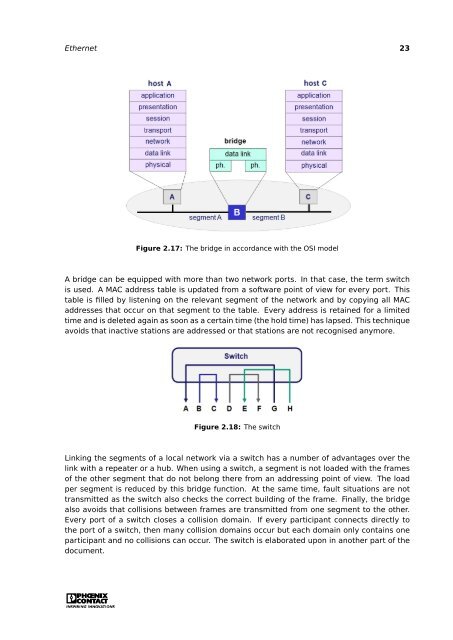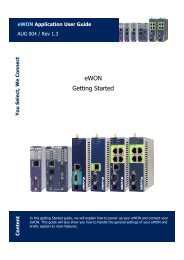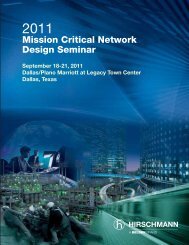Click to download Ethernet Basics manual - Grant Industrial Controls
Click to download Ethernet Basics manual - Grant Industrial Controls
Click to download Ethernet Basics manual - Grant Industrial Controls
Create successful ePaper yourself
Turn your PDF publications into a flip-book with our unique Google optimized e-Paper software.
<strong>Ethernet</strong> 23<br />
Figure 2.17: The bridge in accordance with the OSI model<br />
A bridge can be equipped with more than two network ports. In that case, the term switch<br />
is used. A MAC address table is updated from a software point of view for every port. This<br />
table is filled by listening on the relevant segment of the network and by copying all MAC<br />
addresses that occur on that segment <strong>to</strong> the table. Every address is retained for a limited<br />
time and is deleted again as soon as a certain time (the hold time) has lapsed. This technique<br />
avoids that inactive stations are addressed or that stations are not recognised anymore.<br />
Figure 2.18: The switch<br />
Linking the segments of a local network via a switch has a number of advantages over the<br />
link with a repeater or a hub. When using a switch, a segment is not loaded with the frames<br />
of the other segment that do not belong there from an addressing point of view. The load<br />
per segment is reduced by this bridge function. At the same time, fault situations are not<br />
transmitted as the switch also checks the correct building of the frame. Finally, the bridge<br />
also avoids that collisions between frames are transmitted from one segment <strong>to</strong> the other.<br />
Every port of a switch closes a collision domain. If every participant connects directly <strong>to</strong><br />
the port of a switch, then many collision domains occur but each domain only contains one<br />
participant and no collisions can occur. The switch is elaborated upon in another part of the<br />
document.




